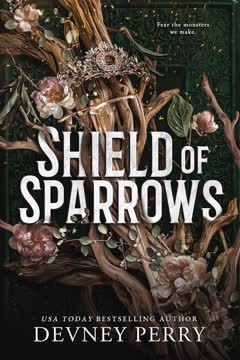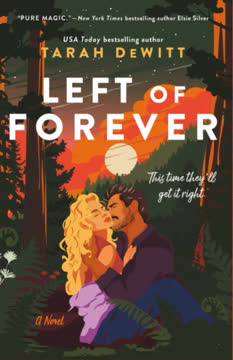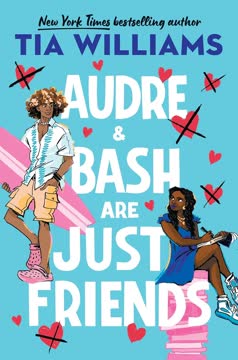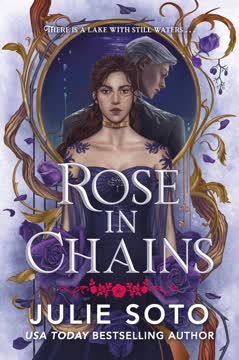Plot Summary
Prom Night's Dark Secret
The story opens with Emily Mills, a sophomore, dying by suicide on what should have been her prom night. Instead of joining her classmates in celebration, she overdoses in her bathtub, leaving behind a swirl of rumors and a devastated community. The police rule it a suicide, but her parents and friends are left reeling, unable to reconcile the Emily they knew with the girl who would take her own life. The phrase "The Thrashers"—the nickname for a tight-knit, popular group of friends—emerges in interviews, hinting at a deeper connection between Emily's death and the social dynamics at play.
The Thrashers' Social Reign
Jodi Dillon, the story's protagonist, is part of the Thrashers, a group that includes Zack Thrasher (the group's namesake and golden boy), Paige, Lucy, and Julian. Their social dominance is both a blessing and a curse: they are admired, envied, and resented in equal measure. Jodi, though close to Zack since childhood, often feels like an outsider within her own group, overshadowed by her more glamorous friends. The group's influence is so pervasive that being associated with them is both a status symbol and a potential social death sentence.
Emily's Death and Aftermath
Emily's suicide sends shockwaves through the school and the Thrashers. Rumors swirl about why she did it, with whispers of bullying and exclusion. The group is forced to confront their own actions and inactions, as well as the ways they may have contributed to Emily's isolation. The school and community begin to turn on them, and the once-invincible Thrashers find themselves under a harsh spotlight, their every move scrutinized.
Police Scrutiny and Suspicion
The police, led by Detective Harding, begin investigating Emily's death as a possible case of criminal harassment and statutory rape, focusing on the Thrashers. The group is brought in for questioning, and their unity begins to fracture under pressure. Jodi, who never drank or partied as hard as the others, is initially seen as less culpable, but the investigation's intensity grows as new evidence—most notably, Emily's journal—comes to light. The journal, however, is a double-edged sword: it's both a record of Emily's pain and a weapon that can be wielded against the group.
Haunted by Guilt
As the investigation intensifies, the Thrashers are haunted—literally and figuratively—by Emily's memory. Strange occurrences, eerie texts, and ghostly apparitions plague the group, especially Jodi and Paige. Paige becomes convinced that Emily's spirit is trying to communicate with them, while Jodi is tormented by dreams and a growing sense of responsibility. The group's guilt manifests in sleep paralysis, panic attacks, and a series of near-fatal accidents, blurring the line between psychological trauma and the supernatural.
The Journal's Deadly Power
Emily's journal becomes the centerpiece of the case against the Thrashers. It contains damning entries about bullying, exclusion, and even an alleged sexual encounter with Zack. However, Jodi discovers that the journal in police custody is a forgery, created by Emily's younger sister, Hannah, in a desperate attempt to seek justice for Emily. The real journal, hidden in the Mills' bathroom, paints a more nuanced picture—one of obsession, misunderstanding, and the desperate longing to belong.
Fractures in Friendship
The pressure of the investigation and the weight of their secrets begin to tear the Thrashers apart. Old wounds resurface, and new betrayals come to light. Jodi feels increasingly alienated, especially as she learns the group has kept things from her—most notably, Zack's secret sexual encounter with Emily and Julian's role in pushing Emily away. The group's once-unbreakable bond is tested as they are forced to choose between self-preservation and loyalty.
The Ghost in the Group
Emily's "ghost" becomes a metaphor for unresolved guilt and the consequences of cruelty. The group attempts a séance, hoping for closure, but instead are confronted with their own complicity and the ways they have haunted each other. The supernatural elements—flickering lights, mysterious texts, and shared visions—underscore the psychological toll of their actions and the impossibility of escaping the past.
Accidents and Apparitions
A series of accidents—Paige's electrocution, a near-fatal car crash, and a collapsing drive-in movie screen—suggest that the group is cursed or being punished. While some incidents are revealed to be the result of Hannah's tech-savvy harassment, others remain unexplained, feeding the group's paranoia and sense of doom. The accidents serve as both literal and figurative reckonings, forcing the Thrashers to confront the consequences of their actions.
The Truth About Emily
Through the discovery of the real journal and conversations with Hannah, the truth about Emily emerges. She was not simply a victim, but also a deeply troubled, obsessive girl who manipulated those around her in her quest for acceptance. Her fixation shifted from Zack to Jodi, and her final act was as much about punishing the group as it was about escaping her own pain. The revelation that Hannah forged the damning journal entries complicates the narrative of guilt and innocence, exposing the dangers of unchecked grief and the need for someone to blame.
Betrayal and Confession
Jodi is forced to confront her own role in Emily's downfall, especially after learning that Julian sent Emily a cache of cruel group messages on the day she died. The group's betrayals—Zack's lies, Julian's cruelty, Paige's secret guilt—come to a head, and Jodi must decide whether to protect her friends or tell the truth. Ultimately, she chooses honesty, providing evidence that exonerates some while condemning others. The group's myth of invincibility is finally broken.
The Price of Popularity
The legal fallout is swift: Paige and Lucy are cleared, Zack escapes conviction on a technicality, but Julian pleads guilty and is sent to juvenile detention. The group is irrevocably changed, their reputations tarnished and their futures uncertain. Jodi, who has always felt like an outsider, is left to pick up the pieces, grappling with the knowledge that popularity comes at a steep price—and that sometimes, the greatest harm is done by those who never meant to hurt anyone at all.
Justice, Lies, and Forgiveness
As the dust settles, the group tries to find closure. Jodi visits Emily's grave with Paige, Lucy, and Zack, each seeking forgiveness in their own way. Paige confesses to a secret act of cruelty, and Jodi finally tells the truth about her own family's dysfunction. The group's attempts at reconciliation are bittersweet, marked by the knowledge that some wounds will never fully heal.
Letting Go of Ghosts
With the truth out and the supernatural disturbances fading, the group is finally able to let go of Emily's ghost—both literal and metaphorical. Jodi realizes that the real haunting was the guilt and secrets they carried, and that moving forward means accepting responsibility and forgiving themselves. The group drifts apart, each member changed by the ordeal, but Jodi finds a measure of peace in honesty and self-acceptance.
New Beginnings, Old Scars
The story ends with the group preparing to leave for college, their friendships forever altered. Jodi visits Julian in juvenile detention, and they share a moment of understanding and regret. The scars of the past remain, but there is hope for new beginnings. Jodi, once the outsider, has found her own voice and path, determined not to let the ghosts of high school define her future.
Characters
Jodi Dillon
Jodi is the emotional core of the novel—a girl who is both part of the Thrashers and yet always on the margins. Her long-standing friendship with Zack is the anchor of her social life, but she is plagued by insecurity, guilt, and a desperate need to belong. Jodi is introspective, artistic, and more sensitive than her friends realize. Her journey is one of self-discovery, as she learns to confront uncomfortable truths about herself, her friends, and the cost of complicity. Her relationship with her alcoholic father and the trauma of her mother's death add layers of vulnerability and resilience.
Zack Thrasher
Zack is the charismatic, well-liked leader of the Thrashers, whose name the group bears. He is charming, inclusive, and seemingly perfect, but his need for attention and approval leads him to make reckless choices—including a secret sexual encounter with Emily. Zack's inability to set boundaries or recognize the consequences of his actions is both his greatest flaw and the source of much of the group's trouble. His relationship with Jodi is complex, marked by unspoken feelings and mutual dependence.
Julian Hollister
Julian is the group's dark edge—witty, sharp-tongued, and often cruel. He is fiercely loyal to Zack but resents Jodi's place in the group. Julian's role as the "enforcer" means he is often the one to push out outsiders, including Emily. His own family dysfunction and struggles with anger mirror Jodi's, and his eventual confession to sending Emily the cruel messages is a turning point. Julian's relationship with Jodi evolves from antagonism to a complicated, almost romantic connection, underscoring the novel's themes of forgiveness and self-awareness.
Paige Montgomery
Paige is bubbly, ambitious, and desperate to maintain her place in the social hierarchy. She is haunted by guilt over Emily's death and becomes convinced that Emily's ghost is punishing them. Paige's anxiety manifests in physical symptoms and a need for control, but she is also capable of deep empathy and self-reflection. Her eventual confession to a secret act of cruelty is a moment of catharsis and growth.
Lucy Reed
Lucy is the group's backbone—fierce, uncompromising, and deeply loyal. She is slow to trust but, once committed, is a friend for life. Lucy's own trauma (including a past assault) makes her especially sensitive to issues of safety and loyalty. She is accused of assaulting Emily but is ultimately exonerated. Lucy's relationship with Jodi is one of mutual respect and support, even as they struggle with the group's unraveling.
Emily Mills
Emily is both victim and antagonist—a lonely, obsessive girl desperate to belong. Her fixation on Zack and later Jodi drives much of the novel's conflict. Emily's manipulations, including her final act of suicide and the secrets she leaves behind, force the group to confront their own capacity for cruelty. Her presence lingers as a ghostly reminder of the consequences of exclusion and the dangers of unchecked longing.
Hannah Mills
Hannah, Emily's younger sister, is the architect of the forged journal and the mysterious texts that torment the Thrashers. Her grief and anger drive her to seek justice for Emily, but her actions ultimately perpetuate the cycle of pain and misunderstanding. Hannah's role complicates the narrative of guilt and innocence, highlighting the ripple effects of trauma.
Oliver Burns
Oliver is a former member of Jodi's social circle, now an outsider who observes the group's dynamics with a mix of bitterness and insight. His testimony is crucial to the legal case, and his perspective offers a counterpoint to the Thrashers' insularity. Oliver's own struggles with exclusion and addiction mirror the group's larger themes.
Detective Harding
Detective Harding is the adult face of accountability, determined to uncover the truth behind Emily's death. Her own history of exclusion and ambition colors her interactions with the group, and she serves as both antagonist and mirror, forcing the Thrashers to confront their own failings.
Kiera
Kiera is a new girl who becomes entangled with the Thrashers, serving as a stand-in for Emily and a reminder of the group's destructive patterns. Her brief presence underscores the dangers of the group's allure and the ease with which new victims can be drawn in.
Plot Devices
Unreliable Narratives and Forged Evidence
The novel's central plot device is the use of Emily's journal—first as a damning piece of evidence, then as a forgery that upends the case. The shifting versions of the truth, the manipulation of memory, and the unreliability of both the living and the dead drive the suspense and force the characters (and readers) to question what really happened. The narrative structure, with its interspersed journal entries and shifting perspectives, heightens the sense of uncertainty and moral ambiguity.
Supernatural Ambiguity
The story blurs the line between psychological trauma and the supernatural. Are the Thrashers really haunted by Emily's ghost, or are they haunted by their own guilt? The recurring motifs of flickering lights, mysterious texts, and shared visions serve as both literal and metaphorical hauntings, keeping the characters (and readers) off-balance and underscoring the novel's themes of consequence and responsibility.
Social Hierarchy and Group Dynamics
The Thrashers' power is rooted in their social dominance, but that power is fragile and easily weaponized. The group's internal dynamics—exclusion, loyalty, betrayal—mirror the larger social forces at play in high school and beyond. The novel uses the group as a microcosm for the ways in which popularity can both protect and destroy, and how the desire to belong can lead to devastating choices.
Foreshadowing and Circularity
The novel is rich in foreshadowing, with early hints of secrets, betrayals, and the supernatural coming to fruition in unexpected ways. The story's structure is circular: the group's actions come back to haunt them, and the final reckoning is both inevitable and surprising. The use of repeated motifs (the bathtub, the journal, the phrase "I'll protect you") ties the narrative together and reinforces its central themes.
Analysis
Julie Soto's The Thrashers is a razor-sharp exploration of the dark side of popularity, the corrosive effects of exclusion, and the blurred boundaries between victim and perpetrator. Through the lens of a high school tragedy, Soto interrogates the ways in which cruelty can be casual, unintentional, and yet devastatingly effective. The novel's greatest strength lies in its refusal to offer easy answers: everyone is complicit, everyone is wounded, and the search for justice is complicated by lies, forgeries, and the desperate need to belong. By weaving together psychological realism, supernatural ambiguity, and a keen understanding of group dynamics, Soto crafts a story that is both a cautionary tale and a plea for empathy. The ultimate lesson is that the ghosts we carry are often of our own making, and that true healing requires honesty, accountability, and the courage to let go of the past.
Last updated:
FAQ
Synopsis & Basic Details
What is The Thrashers about?
- Clique's Dark Underbelly: The Thrashers delves into the aftermath of Emily Mills's suicide, focusing on a tight-knit, popular high school clique known as "the Thrashers" and the police investigation that implicates them in her death. The story follows Jodi Dillon, an outsider within her own friend group, as she navigates mounting suspicions, supernatural ambiguity, and the unraveling of her seemingly perfect social circle.
- Unraveling a Mystery: As Detective Harding scrutinizes the group, particularly through Emily's damning journal entries, Jodi uncovers layers of secrets, betrayals, and a shocking truth about Emily's life and death. The narrative explores themes of social hierarchy and group dynamics, the corrosive nature of casual cruelty, and the desperate human need for acceptance.
- Consequences of Popularity: The novel is a psychological thriller that questions the nature of truth and memory, as the Thrashers face public condemnation and legal battles, forcing them to confront their complicity and the devastating impact of their actions on Emily and themselves.
Why should I read The Thrashers?
- Psychological Depth & Moral Ambiguity: Readers should delve into The Thrashers for its unflinching look at the complex psychology of its teenage characters, offering no easy heroes or villains. The story challenges perceptions of victimhood and culpability, forcing readers to grapple with uncomfortable truths about human nature and social dynamics.
- Gripping Supernatural Thriller: Beyond its social commentary, the novel weaves in elements of supernatural ambiguity, leaving readers to question whether Emily's ghost is truly haunting the group or if their torment is a manifestation of their own guilt. This ambiguity creates a chilling atmosphere that keeps the pages turning.
- Sharp Social Commentary: Julie Soto masterfully dissects the toxic allure of high school popularity, revealing how the desire to belong can lead to casual cruelty and devastating consequences. It's a compelling exploration of how a group's internal dynamics can become a weapon, making it a must-read for fans of dark academia and contemporary thrillers.
What is the background of The Thrashers?
- Sacramento's Social Landscape: The story is set in Sacramento, California, specifically within the affluent "Fab Forties" neighborhood and the competitive environment of New Helvetia High. This backdrop highlights the stark socioeconomic divides within the group, particularly between Jodi and her wealthier friends, influencing their interactions and perceived social standing.
- Digital Age & Social Media's Role: The narrative is deeply embedded in the contemporary digital landscape, where social media platforms like Instagram, TikTok, Snapchat, and Discord are central to teenage communication and social currency. These platforms become tools for both connection and "thrashing," and later, for Hannah's cyber-harassment, reflecting the pervasive influence of online life on reputation and mental health.
- High School Clique Culture: The novel meticulously portrays the intricate and often brutal dynamics of high school cliques, where popularity is a coveted, yet precarious, position. It explores the unspoken rules of inclusion and exclusion, the pressure to conform, and the devastating impact of being "Thrashed" or cast out, drawing on universal experiences of adolescent social navigation.
What are the most memorable quotes in The Thrashers?
- "Because if she wasn't there, she wouldn't exist." (Jodi, Chapter 1): This quote powerfully encapsulates Jodi's deep-seated insecurity and the existential fear of invisibility that drives her desperate need to belong to the Thrashers, highlighting the intense pressure of high school social dynamics.
- "Get too close, and you'll get Thrashed." (Narrator, Chapter 6): This phrase, a chilling summary of the group's reputation, becomes a central motif, foreshadowing the consequences of their actions and revealing the casual cruelty inherent in their social power. It defines the core conflict of the novel.
- "I never wanted her to die. I wanted her to disappear." (Julian, Chapter 27): Julian's stark confession reveals the nuanced, yet devastating, nature of the group's cruelty towards Emily. It highlights the psychological distance they maintained, believing their actions were merely social exclusion rather than potentially fatal harassment, and underscores the novel's exploration of intent versus impact.
What writing style, narrative choices, and literary techniques does Julie Soto use?
- First-Person Introspection: Julie Soto employs a first-person narrative from Jodi's perspective, immersing readers directly into her internal struggles, insecurities, and moral dilemmas. This allows for deep psychological exploration, revealing Jodi's complex emotional landscape and her evolving understanding of her friends and herself.
- Non-Linear Revelation: The narrative skillfully uses flashbacks and interspersed journal entries to gradually reveal past events and hidden truths, creating a sense of suspense and an unreliable narratives and forged evidence. This fragmented structure mirrors the characters' fragmented memories and the elusive nature of truth in the investigation.
- Subtle Foreshadowing & Symbolism: Soto masterfully weaves in subtle hints and recurring motifs, such as flickering lights, water imagery, and the "Thrasher" moniker, which initially appear as minor details but gain profound symbolic meaning as the story progresses, enriching the thematic depth and hinting at the blurred lines between the supernatural and psychological.
Hidden Details & Subtle Connections
What are some minor details that add significant meaning?
- The "Flare" in Photos: Initially dismissed as a phone glitch, the recurring "flare" or "shadow" in Paige's photos and FaceTime calls (Ch. 4, Ch. 12) subtly suggests Emily's lingering presence, feeding Paige's paranoia and blurring the line between supernatural haunting and psychological torment. This seemingly minor visual anomaly becomes a key element in the group's belief in Emily's ghost.
- Oliver Burns's Bowling Alley Story: Oliver's casual mention of the bowling alley incident where his name was removed from the scoreboard (Ch. 27) is a subtle callback to his own "thrashing" experience. This seemingly throwaway detail reveals the long-standing pattern of the Thrashers' exclusionary behavior and provides crucial context for Oliver's later testimony against them, highlighting the deep-seated resentment of those cast aside.
- Jodi's Mother's Suicide Details: The gradual revelation that Jodi's mother died by suicide in a bathtub after an overdose, with Jodi present (Ch. 25, Ch. 28), is a hidden detail that profoundly recontextualizes Jodi's character. This parallel to Emily's death explains Jodi's deep-seated fears of abandonment and drowning, and her intense emotional reaction to Emily's story, adding a layer of personal trauma to the broader narrative of guilt.
What are some subtle foreshadowing and callbacks?
- Emily's "Kinetic Energy" with Lights: Emily's early quirk of streetlights flickering when she's near (Ch. 5) subtly foreshadows the later "supernatural" occurrences like the drive-in screen collapse and Paige's electrocution. This detail, initially presented as an oddity, becomes a recurring motif that blurs the line between Emily's perceived haunting and the group's escalating paranoia, hinting at her manipulative nature.
- Julian's "Dirty Work" Role: Julian's consistent role in "dealing with the aftermath" of Zack's casual friendships (Ch. 6) subtly foreshadows his later confession of sending Emily the Google Drive of cruel messages. This establishes his pattern of being the group's enforcer, willing to undertake unpleasant tasks to maintain their social order, ultimately leading to his legal culpability.
- Jodi's "Thrashed" Feeling: Throughout the novel, Jodi repeatedly feels like she is on the verge of being "Thrashed" herself, despite being a core member (Ch. 6, Ch. 15). This internal fear subtly foreshadows the eventual fracturing of the group and her growing alienation, culminating in her realization that she was always the "final project" for the Thrashers, highlighting her deep-seated insecurity and the transactional nature of their friendships.
What are some unexpected character connections?
- Julian and Jodi's Shared Trauma: The unexpected connection between Julian and Jodi is subtly revealed through their shared experiences with abusive, alcoholic fathers (Ch. 13). Julian's confession of his father hitting him ("He's only hit me a few times though") and his understanding of Jodi's fear ("He just scares you") creates a surprising bond, shifting their dynamic from antagonism to a complex, empathetic understanding that underpins their later romantic tension.
- Oliver Burns as a "Thrashed" Precedent: Oliver's past friendship with Jodi and his later revelation of being "Thrashed" by the group (Ch. 27) establishes him as an unexpected, yet crucial, parallel to Emily. His detailed account of being excluded (e.g., the bowling alley incident) provides a historical context for the Thrashers' behavior, demonstrating that Emily was not an isolated incident and highlighting the group's long-standing pattern of casual cruelty.
- Hannah Mills's Hacking Skills: Hannah's seemingly innocuous interest in computer science camp (Ch. 3) and her flat admission of "hacking in seventh grade" (Ch. 29) reveals her unexpected role as the mastermind behind the digital harassment. This connection explains the mysterious texts and photo glitches, transforming her from a grieving sister into a vengeful, tech-savvy antagonist who manipulates the narrative from behind the scenes.
Psychological, Emotional, & Relational Analysis
What are some unspoken motivations of the characters?
- Jodi's Fear of Invisibility: Beyond simply wanting to belong, Jodi's deepest unspoken motivation is a profound fear of invisibility and abandonment, stemming from her mother's suicide and her father's emotional absence. This drives her self-sacrificing nature and her willingness to tolerate mistreatment from her friends, as she believes her utility (DD, notes, emotional support) is what keeps her "existing" within the group.
- Zack's Need for Universal Adoration: Zack's "niceness" and inability to set boundaries are not just flaws, but stem from an unspoken need for universal adoration and approval. His casual leading-on of girls like Emily and Kiera, and his dependence on Julian to "do the dirty work," reveals a fear of being disliked or seen as anything less than perfect, even at the cost of others' feelings.
- Julian's Burden of Loyalty: Julian's unspoken motivation is a complex mix of fierce loyalty to Zack and a deep-seated resentment for being the one who always has to "clean up" Zack's messes. His willingness to take the fall for Zack (e.g., claiming to drive the car in Ride or Die) and his own cruelty are rooted in a desire to protect Zack's image, while simultaneously expressing his frustration at being the group's moral compass and enforcer.
What psychological complexities do the characters exhibit?
- Jodi's Complicity and Self-Deception: Jodi exhibits the psychological complexity of a bystander who is also complicit. Despite her internal moral compass, she rationalizes her friends' behavior and her own participation in "thrashing" Emily, leading to profound guilt and self-deception. Her struggle to reconcile her desire for acceptance with her growing awareness of the group's cruelty is a central psychological conflict.
- Paige's Anxiety and Control: Paige's psychological complexity is rooted in her perfectionism and intense anxiety, which manifests in physical symptoms like breathing difficulties and a desperate need for control. Her belief in Emily's haunting is not just guilt, but a projection of her fear of losing control over her life and reputation, especially as the investigation threatens her carefully constructed image.
- Emily's Obsession and Manipulation: Emily is portrayed with the psychological complexity of an obsessive personality driven by a desperate need for validation and belonging. Her manipulation, including the forged journal and her calculated final act, stems from a profound insecurity and a distorted perception of relationships, blurring the lines between victim and perpetrator.
What are the major emotional turning points?
- Jodi's Revelation of Her Mother's Suicide: The deposition where Detective Harding reveals Jodi's mother died by suicide (Ch. 25) is a major emotional turning point for Jodi. This shatters her long-
Review Summary
The Thrashers is a gripping YA thriller that follows a group of popular high school students after the suicide of a classmate. Readers praise the fast-paced plot, morally gray characters, and unexpected twists. Many compare it to Pretty Little Liars and 13 Reasons Why. The book features elements of mystery, paranormal activity, and romance. While some found the ending predictable, most were shocked by the epilogue. Reviewers appreciate Soto's writing style and ability to keep them engaged throughout, with many finishing the book in one sitting.
Similar Books
Download PDF
Download EPUB
.epub digital book format is ideal for reading ebooks on phones, tablets, and e-readers.















